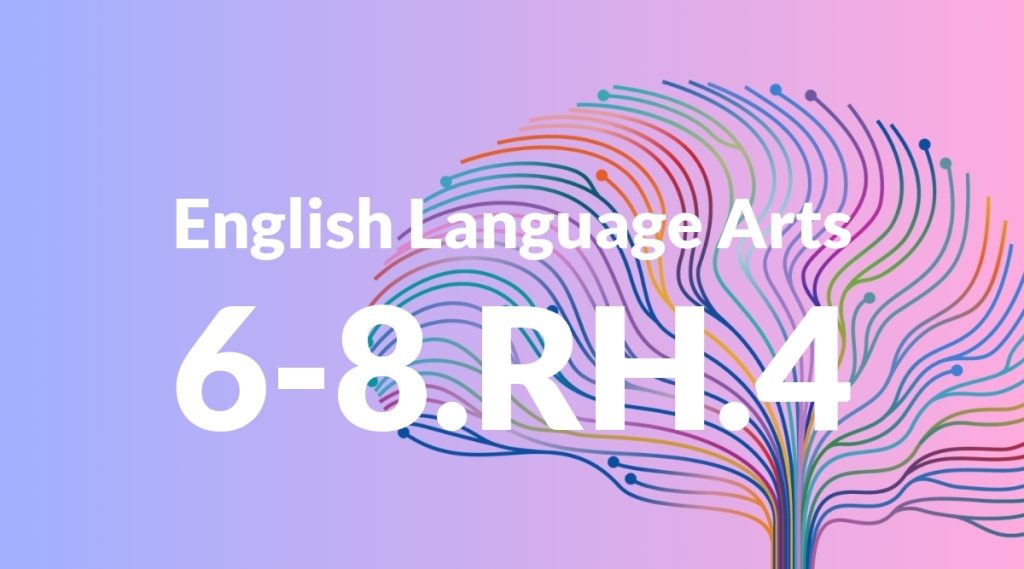Standard: 6-8.RH.4 – Determine the meaning of words and phrases as they are used in a text, including vocabulary specific to domains related to history/social studies.
Grade level: Grade 6-8
Subject: English Language Arts
Domain: History/Social Studies
Teacher Overview
This standard focuses on helping students determine the meaning of words and phrases within historical texts. This skill is crucial for understanding the context and significance of historical events and documents, and it supports broader literacy goals in English Language Arts. Before tackling this standard, students should be comfortable using context clues to determine the meaning of unfamiliar words and have a basic understanding of historical events and terminology.
After mastering this standard, students will be better equipped to analyze and comprehend complex historical texts, improving their overall reading and critical thinking skills.
Common Misconception 1
A common misconception is that students may assume all words in historical texts have the same meanings as they do today. This is incorrect because language evolves, and words can have different meanings based on their historical context.
Intervention 1
An effective intervention is to provide students with historical texts alongside contemporary translations or definitions. This helps them see how word meanings have changed over time.
Common Misconception 2
Another misconception is that students may not see the importance of domain-specific vocabulary. They might think they can understand historical texts without knowing these terms, which is not true.
Intervention 2
To address this, teachers can highlight how specific terms are critical for understanding the nuances of historical events. Using primary sources and discussing the importance of each term can be very helpful.
Prerequisite Knowledge
Students should have a basic understanding of context clues and general vocabulary skills, as well as some familiarity with historical events and concepts.
Subsequent Knowledge
Students will develop the ability to critically analyze historical texts, improve their academic vocabulary related to history/social studies, and enhance their overall reading comprehension skills.
Instructional Activities
- Reading and analyzing primary source documents
- Vocabulary matching games with historical terms
- Creating glossaries for historical units
- Group discussions on the meaning of historical texts
- Writing essays using domain-specific vocabulary




